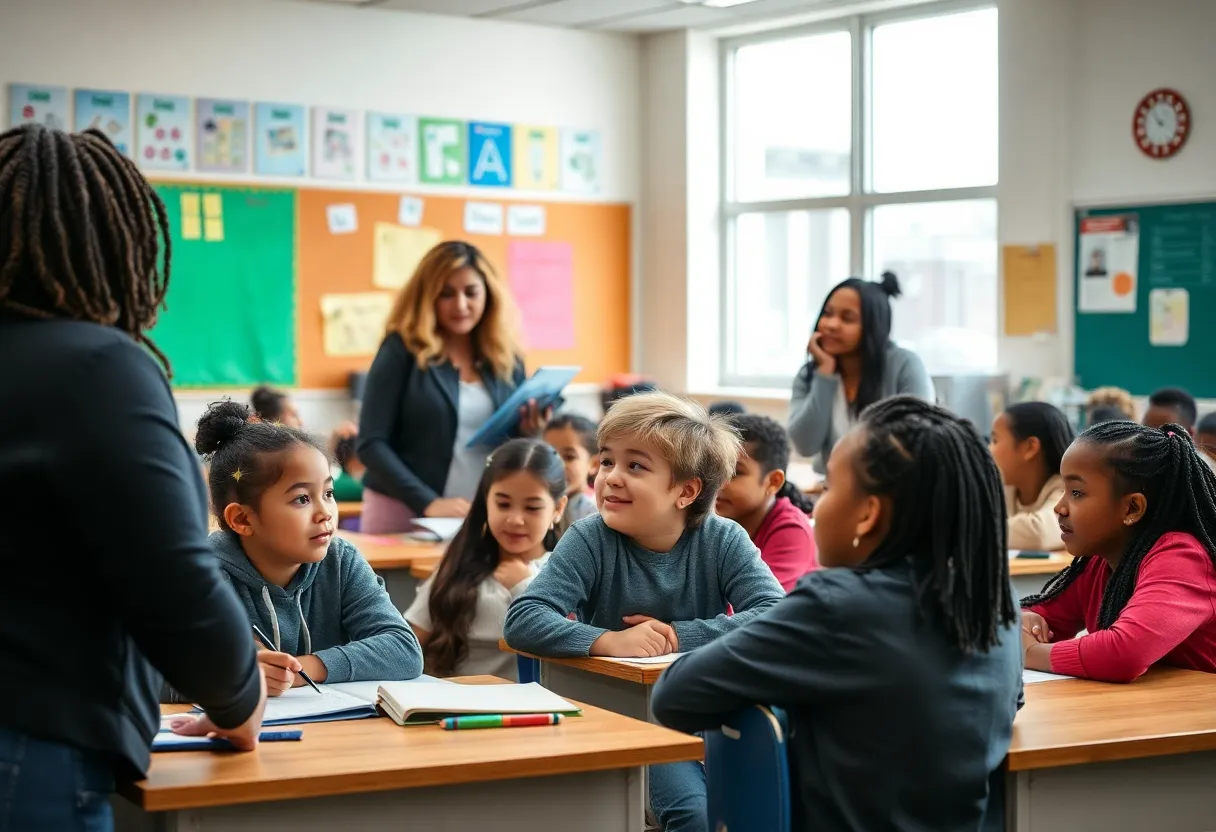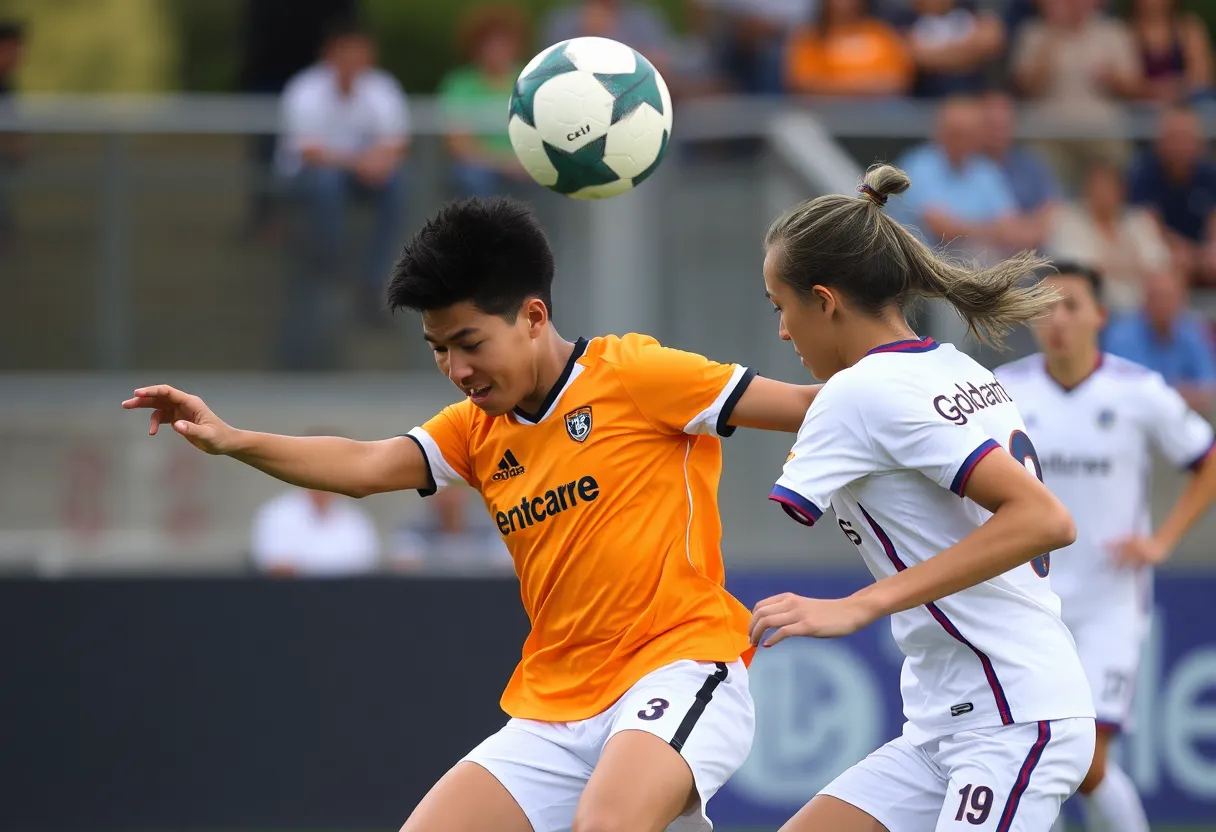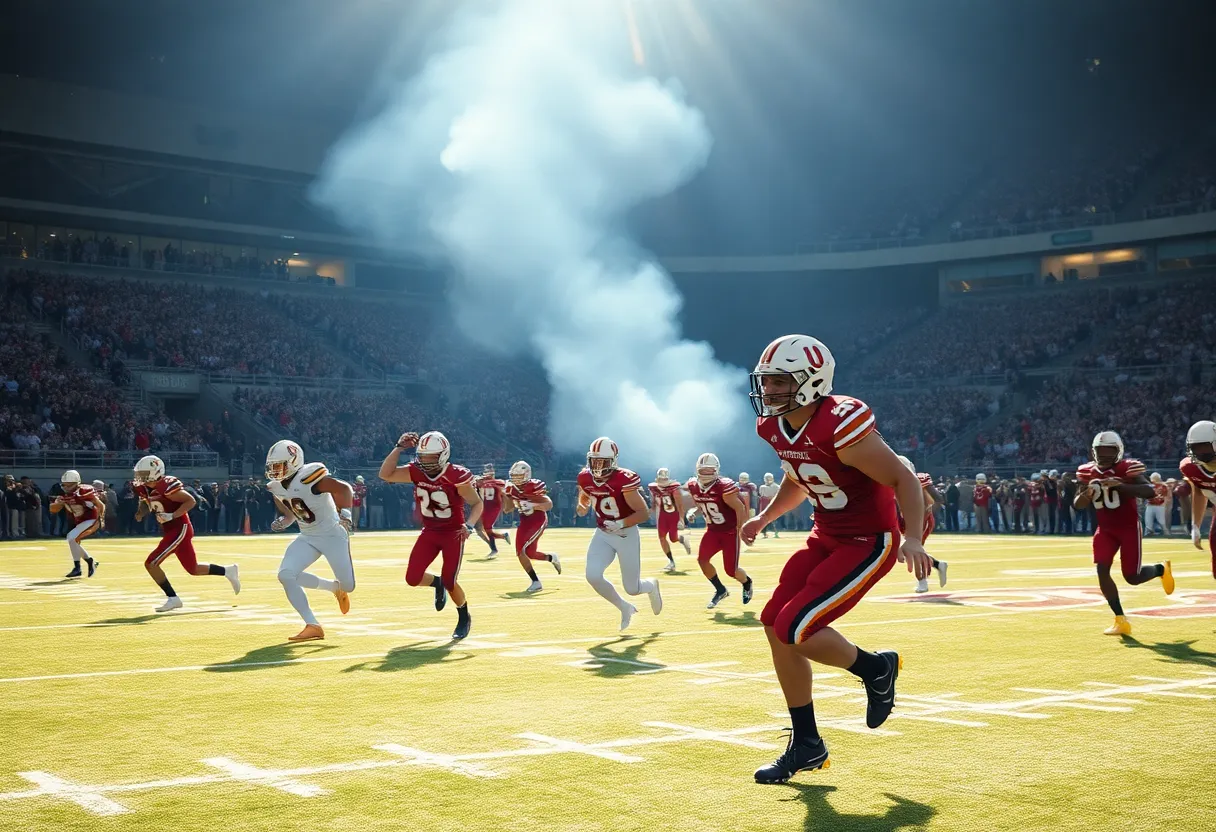Buffalo, NY, October 14, 2025
Buffalo Public Schools are confronting significant challenges in teacher diversity, with over 80% of educators being white. Despite ongoing recruitment efforts and new partnerships with local universities aimed at attracting diverse candidates, progress remains slow. Community advocates urge for accelerated initiatives to create inclusive educational environments that reflect the diverse student population. This disparity points to a need for targeted strategies to improve representation among educators and foster equity within the school system.
Buffalo Schools Face Ongoing Challenges in Increasing Teacher Diversity
BUFFALO, NY – Recent data shows that more than 80% of teachers in Buffalo Public Schools are white, highlighting persistent difficulties in diversifying the educator workforce despite continued recruitment initiatives. This statistic reveals a significant gap between the teaching staff and the diverse student population the district serves. Officials in the district have launched new partnerships with local universities to draw in a broader range of candidates, with the goal of creating a more reflective representation of student demographics. Community members advocating for change emphasize the need for faster action to build inclusive spaces for learning.
Current State of Teacher Demographics
The predominance of white educators in Buffalo Public Schools underscores a long-standing issue. With over 80% of the teaching staff identifying as white, the composition does not align with the varied backgrounds of students in the district. This mismatch can influence the educational experience, as students benefit from seeing a variety of perspectives in their classrooms. The data, gathered from recent assessments, points to the challenges in shifting these numbers despite years of attempts to improve diversity.
District administrators recognize that representation matters. A teaching body that mirrors the student population can enhance engagement, provide role models from different backgrounds, and support overall academic success. However, progress has been gradual, and the current figures indicate that more targeted strategies are necessary to make meaningful changes.
New Initiatives to Attract Diverse Educators
To address this imbalance, Buffalo Public Schools have formed collaborations with nearby universities. These partnership programs focus on identifying and recruiting candidates from underrepresented groups. Efforts include tailored training sessions, mentorship opportunities, and streamlined pathways into teaching positions. The aim is to create pipelines that encourage diverse individuals to pursue careers in education within the district.
These university partnerships represent a proactive step. By working closely with institutions that have access to a wide pool of potential educators, the district hopes to increase applications from qualified candidates who bring varied cultural experiences. Initial phases of these programs involve outreach events and scholarship incentives to lower barriers for entry into the profession. While it’s early to measure long-term impacts, such measures signal a commitment to evolving the workforce.
Community Push for Quicker Progress
Advocates in the community stress the importance of accelerating these diversity efforts. They argue that inclusive learning environments are essential for all students, particularly those from minority groups who may feel more connected when taught by educators who share similar backgrounds. Calls for urgency come from groups focused on equity, who point out that slow change perpetuates disparities in education.
The push from the community adds pressure on district leaders to implement reforms more swiftly. Suggestions include expanding recruitment beyond traditional channels, offering professional development on cultural competency, and tracking progress through regular demographic reports. These voices highlight that diversity is not just a goal but a necessity for fostering equity across the school system.
Background on Diversity Challenges in Education
The issue of teacher diversity in Buffalo Public Schools is part of a larger pattern seen in many urban districts. Factors contributing to the high percentage of white educators include historical hiring practices, limited pools of qualified diverse candidates, and retention challenges for minority teachers. Nationally, similar disparities exist, with studies showing that minority educators often face higher burnout rates due to additional responsibilities like cultural mediation.
Buffalo’s student body is notably diverse, with significant populations of Black, Hispanic, Asian, and multiracial students. This contrasts sharply with the over 80% white teaching staff, creating a visible disconnect. Past efforts, such as diversity training and hiring incentives, have yielded some results but not enough to shift the overall balance significantly. The recent data serves as a reminder that sustained, multifaceted approaches are required.
District officials continue to monitor these initiatives closely, adjusting based on feedback from participants and community stakeholders. The partnerships with universities are expected to yield initial results in the coming recruitment cycles, potentially increasing the number of diverse hires. However, achieving true representation will demand ongoing investment and collaboration.
As Buffalo Public Schools move forward, the focus remains on building an educator workforce that supports every student’s potential. The over 80% white composition is a starting point for discussion, but the new programs offer hope for gradual improvement. Community involvement will play a key role in ensuring these efforts lead to lasting change.
This situation reflects broader conversations in education about equity and inclusion. By prioritizing diversity, districts like Buffalo aim to create environments where all students thrive.
FAQ
What percentage of teachers in Buffalo Public Schools are white?
More than 80% of teachers in Buffalo Public Schools are white.
What challenges are Buffalo Public Schools facing regarding teacher diversity?
Buffalo Public Schools continue to grapple with teacher diversity challenges, as recent data reveals over 80% of educators remain white despite ongoing recruitment efforts.
What new initiatives have been launched to improve diversity?
District officials highlight new partnership programs with local universities to attract diverse candidates.
What is the goal of these partnerships?
The partnerships aim to better reflect the student body’s demographics.
What do community advocates want?
Community advocates call for accelerated progress to foster inclusive learning environments.
Key Diversity Statistics and Initiatives
| Aspect | Details |
|---|---|
| Current Teacher Demographics | Over 80% white educators |
| District Challenges | Grappling with diversity despite recruitment efforts |
| New Initiatives | Partnerships with local universities |
| Goal of Partnerships | Attract diverse candidates to reflect student demographics |
| Community Advocacy | Calls for accelerated progress for inclusive environments |
Deeper Dive: News & Info About This Topic
HERE Resources
Community Celebrates Indigenous Peoples Day in Buffalo
Buffalo Tackles Racial Imbalance in Teaching Staff
Buffalo Public Schools Names D.J. Granville Interim Superintendent
Buffalo Schools Face Teacher Diversity Challenges
Buffalo, NY Designates Scajaquada Creek as Historic Waterway
Buffalo Public Schools Address Teacher Diversity Challenges




